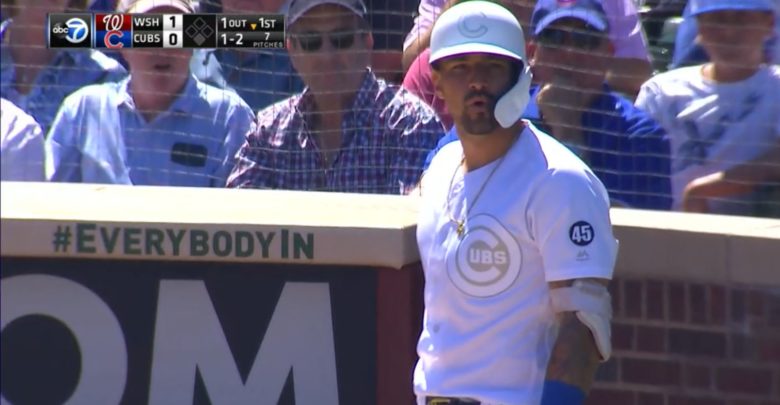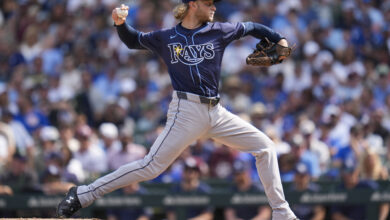
Nicholas Castellanos Exposes Flaws in Players Weekend Jerseys, Not MLB’s Analytics
At the risk of signal-boosting an irresponsibly bad premise writ large by the headline and poorly supported thereafter, I did enjoy Nicholas Castellanos’s thoughts on the Players Weekend uniforms. You’d expect nothing less from a man wearing ARTIST on the back of his all-white jersey, not that you could actually see what it said.
“This Players Weekend is promoting our individuality,’’ Castellanos told USA TODAY Sports, “and what a worse way to give us a platform to promote ourselves by making our jerseys the exact same colors so people in the stands can’t see it. I was standing in right field and I couldn’t even see the number or names on the back.
“I think Major League Baseball made them the same color in case we tried to put something on the back of our jersey they wouldn’t like, so it wouldn’t show up. That’s the only thing I can think of. Just terrible marketing.’’
Boom, nailed it. In keeping the theory Castellanos is pushing here, MLB missed a golden opportunity to let players do with their jerseys what they were allowed to do with their cleats and bats. Which is to say they could have enlisted local artists, charitable organizations, or even their own kids to add a signature flair to the blank slates they wore.
Even something as simple as having jersey numbers and nicknames in team colors or just piping them with colored embroidery would have gone a long way. And let’s not even bother chewing again on the idiocy of forcing pitchers to wear black hats even when their team wore white uniforms.
Instead, let’s finish by addressing the fallacy that Castellanos has in any way “exposed the flaws of baseball’s analytics by his performance alone this month.” That assumes the Cubs either saw in the outfielder something no other team did or that the breakout performance from which they’ve benefited is the product of pure dumb luck. Neither is accurate.
Now, he’s getting the last laugh, proving that despite the benefits clubs may derive from analytics, there are no algorithms to measure a player’s heart, fortitude and competitiveness.
Besides, if analytics were the end-all, be-all, then how come every contender blew the chance to grab him. Castellanos has his own spray charts showing those balls he was hitting into right-center-field would have been homers if his home games weren’t played at Comerica Park with the center-field 420 feet away.
And where are the analytics that show how being thrust into a playoff race — instead of being stuck on a team that has been outscored by 257 runs — can dramatically change your performance?

I don’t expect Bob Nightengale to go slumming in the blog world, certainly not with the 12th most popular Cubs site, but this stuff was all pretty obvious. Not only did we use information culled from some online friends to show that Castellanos would almost surely hit more home runs with the Cubs, but the player himself more or less admitted in mid-July that he’d perform better in a new environment.
Using four weeks of results to indict analytics is foolish enough in and of itself, but the very notion that no one saw this coming is insulting to far more than just front offices. While I’m sure old-school folks who want to rage against the dying of the light will lap this up, it’s patently false and isn’t rooted in fact.
The analytics actually did show that Castellanos would have a positive impact and change-of-scenery boosts are well-documented and understood. Just look at Cole Hamels last season. Now if you’ll excuse me, I have to be very careful so I don’t break my leg climbing down from this high horse.

